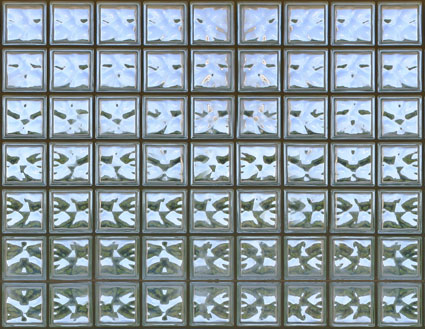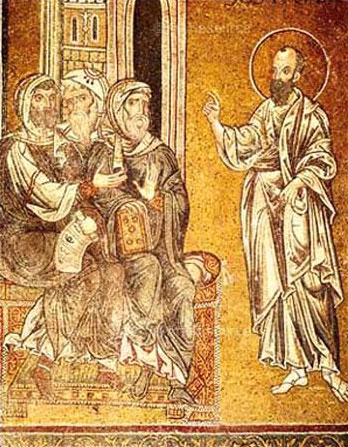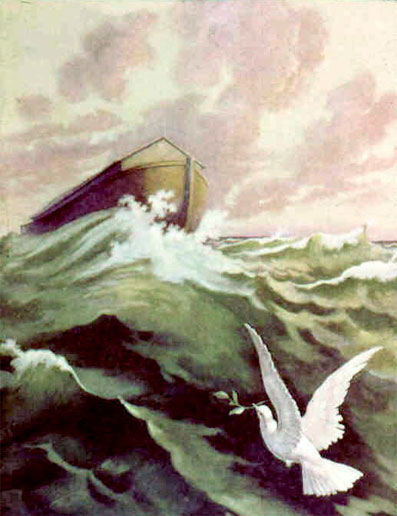Oct
20
2009
or Submissible Evidence According to Paul

“…it is instructive that when the issue was so decisively drawn with his legalist opponents, Paul, at the climax of his argument, appealed to an allegory to refute the gainsayers of grace…”
Warren Gage writes:
Continue reading
Comments Off | tags: Galatians, Hermeneutics, Paul, Typology, Warren Gage | posted in Biblical Theology, Quotes
Oct
6
2009
 This overlaps the passage Kelby did the other day, so we may of course be chasing our tails. There is definitely a progression in the passage, however, and such analysis does help in meditation on the text. Perhaps there is a way of combining them.
This overlaps the passage Kelby did the other day, so we may of course be chasing our tails. There is definitely a progression in the passage, however, and such analysis does help in meditation on the text. Perhaps there is a way of combining them.
Continue reading
1 comment | tags: Colossians, Feasts, Literary Structure, Paul | posted in Biblical Theology
Oct
1
2009

This contribution by Kelby Carlson, who just finished my book. He deserves a big medal. He also thinks it should be longer!
For our English class we are reading The Scarlet Letter. It’s amazing how much symbolism there is in literature, and your book (Jordan’s, too, and a few others) have really started to help me see that. I think man fundmentally fits symbols into everything, even if sometimes it is unintentional. I am just amazed at how something that at first appears simple can say so much; which has me even more in awe of the Scriptures.
Continue reading
Comments Off | tags: Bible Matrix, Chiasm, Colossians, Feasts, Kelby Carlson, Literary Structure, Liturgy, Paul, Totus Christus | posted in Biblical Theology
Sep
21
2009

or Feeding the Correct Dog
THIS POST HAS BEEN REMIXED AND INCLUDED IN GOD’S KITCHEN: THEOLOGY YOU CAN EAT AND DRINK
You must be logged in to see the rest of this post.
Join now for a year for $15!
An added thought based on this from a post last week:
Living things have brains, guts and outsides. This is Word, Sacrament and Government. Word is intangible, but our emotions are communicated symbolically through our bodies. Facial expressions and body language are the response of the “Holy Place” to the “Most Holy” of our inner soul. Eyes are organs of judgment. Eyes are also the windows to the soul. The crystal sea is a window to heaven. The “outer court” interacts with the world and needs cleaning. Only clean stuff is allowed inside the “Holy Place.”
So, basically, as a Tabernacle, if my mind is a symbol of the command from the Most Holy (Word), and my body carries out my thoughts and intents in the world (Government), what is in between? The Holy Place, the place of flesh offered to God.
Continue reading
2 comments | tags: Atonement, Corinthians, Fasting, Paul, Sacraments, Tabernacle | posted in Christian Life
Aug
31
2009

or Through a Glass Sea Darkly
“Love never fails. But whether there are prophecies, they will fail; whether there are tongues, they will cease; whether there is knowledge, it will vanish away. For we know in part and we prophesy in part. But when that which is perfect has come, then that which is in part will be done away.” 1 Cor. 13:8-10
I remember hearing a Southern Baptist pastor many years ago teaching that “that which is perfect” was the completed New Testament. He was forced to find some point in first century history that would justify his belief in the cessation of miraculous gifts like tongues. Well, to a point, I think he was right.
Continue reading
7 comments | tags: AD70, Bible Matrix, Firstfruits, oikoumene, Paul, Resurrection, Revelation, Tabernacle, Tabernacles, Tongues, Two witnesses | posted in Biblical Theology, The Last Days
Aug
1
2009

Or Rich Jewish Rulers made Poor, Blind and Naked
Or The Bible Teaches Replacement Theology
According to James Jordan, there’s nothing much in Revelation that isn’t also elsewhere in the New Testament. We just don’t get Revelation because we don’t speak the language of the Old Testament with any confidence. Accordingly, his interpretation of the Apocalypse interprets the seven Seals as the release of the gospel. The Trumpets are the warnings of the Apostles to the Jews until the beginning of the Roman siege. [1]
Continue reading
Comments Off | tags: Acts, Dominion Theology, James Jordan, Passover, Paul, Replacement Theology, Revelation | posted in Biblical Theology, The Last Days, Totus Christus
Jul
18
2009
Genesis (Sabbath) – Grace and peace (Shalom in Christ)
[Ephesians 1]
…..Exodus (Passover) – Children of wrath made members of the
…..household of God by the blood of Christ [Ephesians 2:1-17]
……….Leviticus (Firstfruits) – Access to the Father as the dwelling
……….place of God. The mystery of God opened [Ephesians 2:18-3:12]
……………Numbers (Pentecost) – Filled with all the fullness of God,
……………strengthened with might through His Spirit [Ephesians 3:13-21]
……….Deuteronomy (Trumpets) – Law repeated. The troops presented
……….to God. Inheritance. Music [Ephesians 4:1-6:9]
…..Joshua (Atonement) – Every saint wears the armour
…..of the High Priest [Ephesians 6:10-18]
Judges (Tabernacles) – Paul the ambassador to the Gentiles
[Ephesians 6:19-24]
Comments Off | tags: Ephesians, Literary Structure, Paul, Systematic typology | posted in Biblical Theology
Jul
9
2009
This passage is arranged symmetrically (chiasmus) but is also progressive, following the pattern of the Feasts (which also follow the pattern of Genesis to Judges).
Sabbath/Genesis – Paul’s word of greeting (Grace and peace)
……….Passover/Exodus – Divisions in the church
………………..Firstfruits/Leviticus – Wisdom of Christ
…………………………Pentecost/Numbers – Crucifixion of Christ
………………..Trumpets/Deuteronomy – Mind of Christ
……….Atonement/Joshua – Divisions in the church
Tabernacles/Judges – The Day will declare (judge) it (Church as Sabbath-Temple)
Kelby asked if these patterns are simply the work of the Holy Spirit, or if the authors of the Bible were consciously composing their writings in this manner. Good question. I think the answer is both. Bible books sometimes arrange events out of chronological order to fit this pattern. But then, Bible history also follows this pattern at various levels. The authorship of Scripture is like the humanity and divinity of Christ: inseparable.
Comments Off | tags: Chiasm, Feasts, Paul, Typology | posted in Biblical Theology
Jul
6
2009

If we don’t get Genesis right, we’ll get much of the Bible wrong. In Through New Eyes (PDF), James Jordan identifies a three-level “cosmos” in the Creation, which is reflected on the earth. There is the Garden Sanctuary, the Land of Eden, and the Outlying Lands, or Garden, Land and World.
This is reflected, not only in the ark of Noah, but also in the Tabernacle. The image is dual, one in heaven and one on earth:
Continue reading
Comments Off | tags: Against Hyperpreterism, Altar, Babel, oikoumene, Paul, Tabernacle | posted in Against Hyperpreterism, Biblical Theology, The Last Days
Jul
1
2009
“Because of 18th century rationalism in our culture, we are the heirs of a tradition of thinking that downplays symbolism in communication. The assumption is that all truth comes in the categories of philosophical statements. We are very much at home reading St Paul because he uses abstract language: justification; sanctification; glorification; propitiation… We think that this is the best way to communicate and nail things down.
But this is not the way God communicates. God communicates in parables as well as abstract ideas. God communicates in architectural forms, in proverbs, in songs. God’s way of educating young people is the Proverbs. Our way is to make them memorise a list of abstract nouns. That’s what the Shorter Catechism is. The Proverbs have a different way of communicating, a way that is much more holistic. It strikes the human personality at a deeper level.”
–James B. Jordan, The Bible as Picture, Basilean Lectures 1990.
Comments Off | tags: James Jordan, Paul, Proverbs, Rationalism | posted in Biblical Theology, Quotes
































